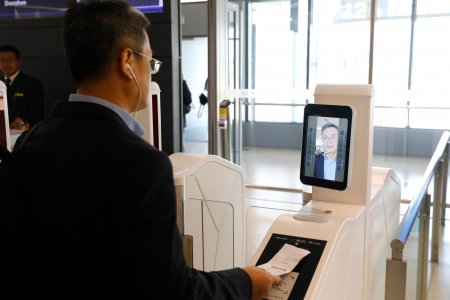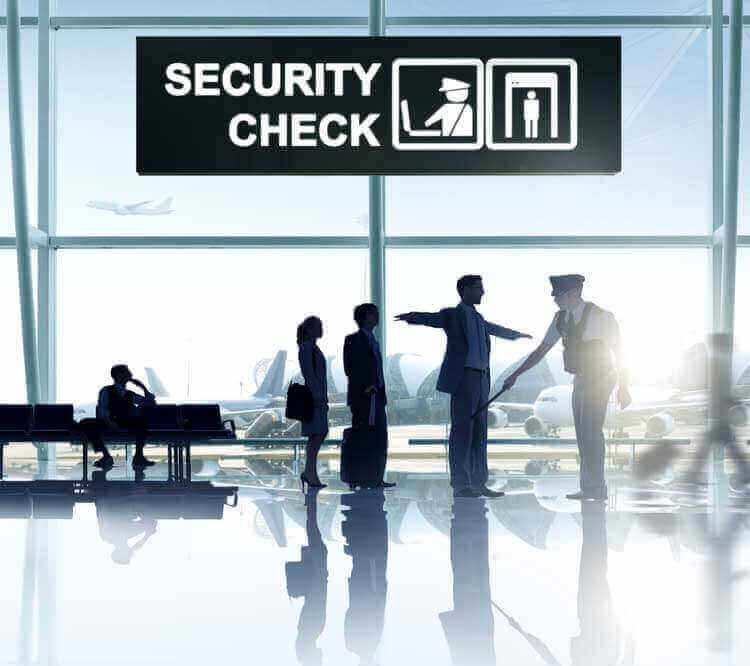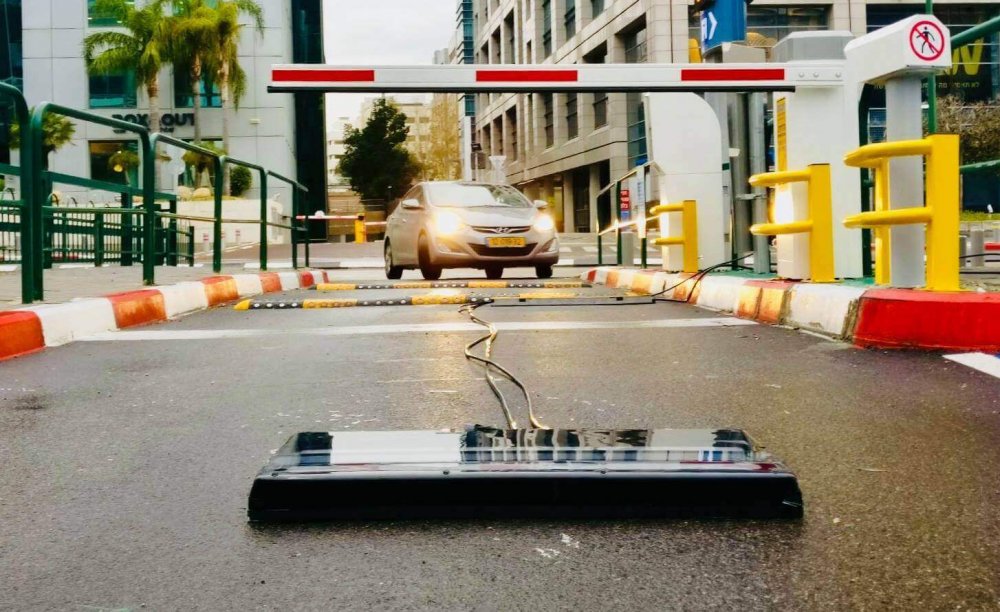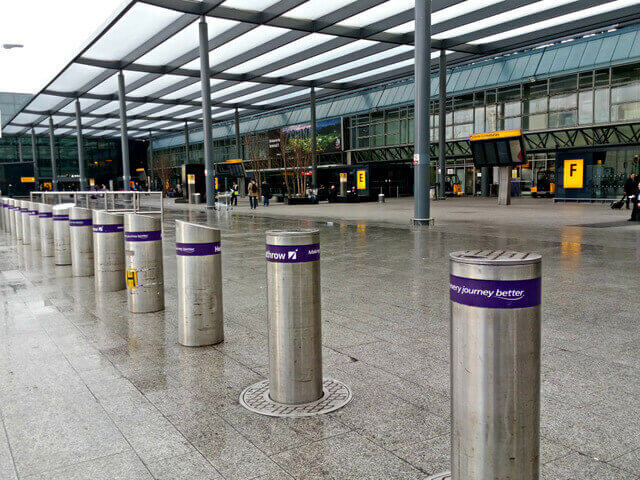4 Airport Screening Technologies for 2021
Airports present a complex challenge to security managers, representing in sharp relief the tension between the need for efficiency and that of maintaining the highest levels of security standards.As the primary passenger travel hubs of the modern era, airports see the most significant amount of traveler traffic as billions pass through their gates annually on their way to their destinations, both domestic and international. This trend of higher rates of air travel shows no signs of letting up any time soon as global demand for air travel continues to be on the rise, hitting an additional 5% of growth by June of 2019.
The challenge for security managers becomes one of how to ensure that all of these travelers are able to move as freely as possible to reach their gate while ensuring that they and the employees who facilitate the operations are all screened for any potential threats to security. In response, airport security managers are seeking out technologies that can help their teams to do more within their constraints.
In this post, we take a look at four different technologies that are making their way into airport security managers’ planning as they build out their strategies for the year ahead.
The Threat to Airports and Planes
Airplanes and airports represent ideal targets for violent actors seeking to carry out well publicized, substantial attacks. Assaults on the airport grounds or attacks on airborne craft with an explosive or other means have the potential to grab headlines, cause massive casualties, harm the air travel industry, and draw significant reactions from authorities. For these reasons and more, the consequences stemming from a successful attack in this space can be severe and leave little room for error.
Striking a balance between the two seemingly conflicting requirements is a difficult act, but is achievable when we define our threat models and implement the necessary solutions and strategies to reach our goals.
Building a strategy starts with thinking about how to implement inspections before the travelers reach the terminal.
Arrival at the Airport
In an ideal security situation, all plots to carry out attacks against an airport would have been picked up by intelligence operations long before the perpetrators even reach the grounds of the airfield.
However, intelligence failures happen and we need to have measures in place to prevent attackers from reaching the terminals where they can carry out their attacks, potentially causing significant losses of life.
The June 2016 attack on Istanbul’s Ataturk Airport that killed 41 people and left more than 230 injured was a stark reminder that attackers do not even have to pass through terminal security in order to pose a threat to air travel security.
Controlling access to the terminals with a defined checkpoint at the entrance to the grounds can be a good start for defending your airport. It is advisable to offer a multi-lane checkpoint which compels the incoming traffic to slow for an inspection that allows security officers to perform a quick visual inspection of the vehicle and its passengers, asking them a question or two to ascertain whether they require additional checks depending on whether they show suspicious behavior.
As the vehicles cross through the checkpoint, interacting with personnel who look into the vehicle’s interior, there is an opportunity to also scan the undercarriage of the vehicle for additional threats such as explosives or other weapons which might be hidden below.
Under vehicle inspection technologies (UVIS) that utilize high-resolution cameras to capture images for deep learning analysis allow security teams to scan and detect potential threats in a matter of seconds. Advanced systems in this market use anomaly detection to identify suspicious items based on their deep understanding of the various elements that make up the vehicle (ie. the exhaust pipe, brake lines, etc), and can alert security teams to the need for additional checks if it finds something that is out of place.
These high-end solutions do not require previous scans of the vehicle or a manufacturer’s model, giving it a “first pass” capability that is essential for airports that deal with new traffic on a regular basis. They also offer comparison technology which can play an important role for dealing with insider threats, which will be covered in our next post.
The UVIS technology gives airports the ability to move vehicles through the checkpoint quickly, only flagging those that raise red flags for more intensive scans, thus minimizing the time spent stuck waiting for inspections without compromising on security requirements.
Automated Screening Lanes
Once the travelers reach the terminal and check in, they are ready for the next stage of the security inspections before reaching the gate hall. Often categorized by long lines and fraught nerves, this security check is ripe for a shake up.
An upgrade to the traditional security line, Automated Screening Lanes (ASL) systems offer a number of advantages.
First, instead of a single line trudging along waiting to advance, travelers need only to find an open station where they can place their items into the waiting bins which are reported to be bigger than the previous models. Hopefully, this means that the entire line will not be held up due to one slower to unload traveler. The bins themselves are equipped with RFID tags to identify as they pass through the scanners. If a bin is identified as needing an additional inspection, it can be diverted from the rest of the flow so as not to slow down the rest of the travelers as they make their way through the x-ray machine.
While the use of these systems is still at its early stages in just a relative handful of major American airports, they are already showing promise. Take a quick look at this video from the TSA on how ASLs are being implemented for faster scanning.
Facial Recognition
Serving a dual purpose for both identification and tracking, facial recognition has the potential to add an important layer for verification at the security checkpoint.
When the traveler scans their travel documents (passport or another document), their picture can be taken to verify that they really are who they claim to be. Using these systems can be faster than having human agents checking IDs against the traveler and their database, both in terms of speed of operation and the ability to have multiple stations running non-stop without needing additional personnel on shift.
Along with this use, facial recognition can be used to track both travelers and others such as airport employees as they move throughout the facility. This capability can be useful for access control needs as well as a fast response for locating a person of interest


While just a few years ago we might have heard more noise against the idea of using facial recognition at these checkpoints, they have become a fait accompli at this point as biometrics and surveillance have become a standard at the airports.
Standoff People Screening
Once the travelers have been identified and their belongings are on their way through the x-ray, it is time for them to have their persons scanned for any dangerous items. This stage is a constant point of frustration as travelers work to remove belts and any other items that have no right to set off a beep but inevitably do.
The body scanners that have become a constant of the past decade or so raise issues of their own, ranging from privacy and health to discomfort of raising your hands above your head like a prisoner of war or worse.
While it is still possible to request a good old fashioned pat down for those who prefer a more personal touch, there are new options out there that could offer a third way. Standoff screening allows multiple people to walk through at a time, identifying any suspicious items that they may have on their person, and alerting for secondary searches.
High-end estimates place the capacity of these systems to move nearly 2,000 people through their scans in an hour, depending in part on other conditions in the mix, while the low end puts the number somewhere closer to 500. We should recognize that they are still early stage and are probably not where they need to be yet to operate on their own without additional measures.
However, despite the calculated rollout, the development of these devices is a positive that can help lead to a faster security process by reducing friction at these high-stress points.
The Sky’s the Limit
New challenges of how to detect and defend against threats place security managers in a perpetual search for new solutions.
The post-9/11 era has brought about a sea change in how travelers are inspected before being allowed to reach the gates, and eventually their flights. Whereas the hijackings of the 1970s introduced the need for metal detectors, the shoe and underwear bombers have brought about the era of the body scanners in the first two decades of the millennium. Developments in the field will drive the next generation of security device innovations, which themselves are still playing catch-up to the last attack.
Moving forward, airport security managers are on the lookout for systems that are more automated to help their teams make securely scanning the traveling public at an increasingly larger scale a more achievable task. It is up to the innovators in the sector to provide them with capabilities that go beyond that of the human eye to find dangerous threats wherever they may be, keeping the stream of air travel flowing with minimal interruptions.


